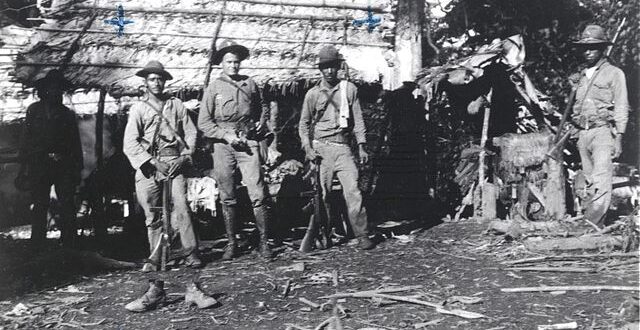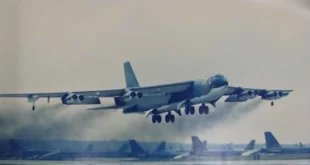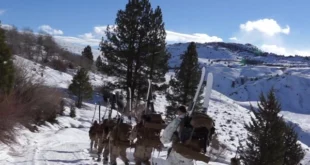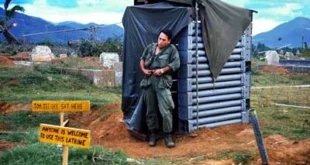s the Marine Corps celebrates its birthday, what better way to say cheers than to tell the story of one of their favorite heroes, the legendary Chesty Puller.
Lieutenant General Lewis “Chesty” Burwell Puller, colorful veteran of four World War II campaigns, Korea, and expeditionary service in China, Nicaragua and Haiti, was one of the most decorated Marines in the Corps, and the only Leatherneck to win the Navy Cross five times for heroism and gallantry in action. More than 50 years after his death, Soldier of Fortune readers tell us they remember where they were when Chesty died.
Recalls reader Thomas Arcuri: “I was in Parris Island the day he passed away! We slept at attention that night!”
Others recall the prominent presence he was in their Marine Corps units.
“While in Parris Island Boot Camp 1982, just before bed the Drill Instructors would cut out the lights and we would yell Goodnight Chesty Puller and then I would yell Goodnight back and the lights would come back on and the pushups would begin,” Giles Mitchell remembers.
“While stationed in Okinawa, I worked for a GS12 who was NJP’d and busted to Pvt by Chesty Puller, in Korea during the police action,” notes reader Peter Zamora. “He had his SRB entry framed on his office wall with a picture of him and Chesty.”
Who was this legendary and influential man?
A Marine officer and enlisted man for 37 years, Puller served at sea or overseas for all but 10 of those years, including a hitch as commander of the “Horse Marines” in China. Excluding medals from foreign governments, he won a total of 14 personal decorations in combat, plus a long list of campaign medals, unit citation ribbons, and other awards. In addition to his Navy Crosses (the next-highest decoration to the Medal of Honor for Naval personnel), he holds its Army equivalent, the Distinguished Service Cross.
He was awarded the Distinguished Service Cross and his fifth Navy Cross for heroism in action as commander of the 1st Marines, 1st Marine Division, during the bitter fight to break out of Korea’s Chosin Reservoir area. The latter citation, covering the period from 5-10 December 1950, states in part as follows.
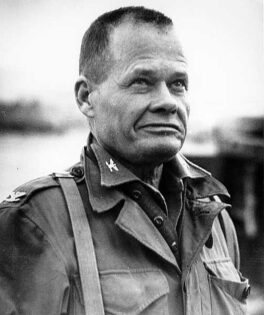
“Fighting continuously in sub-zero weather against a vastly outnumbering hostile force, (the then) Colonel Puller drove off repeated and fanatical enemy attacks upon his Regimental defense sector and supply points. Although the area was frequently covered by grazing machine gun fire and intense artillery and mortar fire, he coolly moved among his troops to insure their correct tactical employment, reinforced the lines as the situation demanded and successfully defended his perimeter, keeping open the main supply routes for the movement of the Division.
“During the attack from Koto-ri to Hungman, he expertly utilized his Regiment as the Division rear guard, repelling two fierce enemy assaults which severely threatened the security of the unit, and personally supervised the care and prompt evacuation of all casualties. By his unflagging determination, he served to inspire his men to heroic efforts in defense of their positions and assured the safety of much valuable equipment which would otherwise have been lost to the enemy.”
Serving in Korea from September 1950 to April 1951, the general also earned the Army Silver Star Medal in the Inchon landing, his second Legion of Merit with Combat “V” in the Inchon-Seoul fighting and the early phases of the Chosin Reservoir campaign, and three Air Medals for reconnaissance and liaison flights over enemy territory.
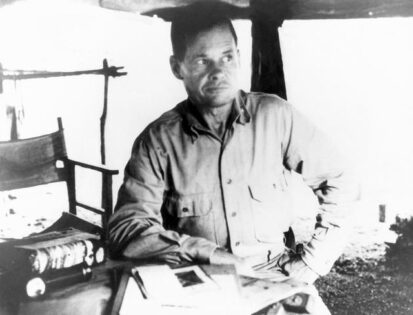
Puller also fought with the 1st Marine Division in the World War II campaigns on Guadalcanal, Eastern New Guinea, Camp Gloucester and Peleliu, earning his third Navy Cross and the Bronze Star and Purple Heart Medals at Guadalcanal, his fourth Navy Cross at Cape Gloucester, and his first Legion of Merit with Combat “V” at Peleliu. He won his first Navy Cross in November 1930, and his second in September and October 1932, while fighting bandits in Nicaragua.
After almost five years in Haiti, where he saw frequent action against the Caco rebels, Puller returned to the United States in March 1924. He was commissioned a Marine second lieutenant that same month.
In July of that year, he embarked for a two-year tour of duty at Pearl Harbor. Several months later, he joined the Nicaraguan National Guard Detachment. After earning his first Navy Cross in Nicaragua, he returned to the United States to enter the Company Officers Course at the Army Infantry School, Fort Benning, Georgia. He completed the course in June 1932, and returned to Nicaragua the following month to begin the tour of duty which brought him his second Navy Cross.
Born 26 June 1898, at West Point, Virginia, Puller attended Virginia Military Institute until enlisting in the Marine Corps in August 1918. He he died on 11 October 1971 in Hampton, Virginia after a long illness.
For more about Chesty, see the Marine Corps University story from which portions of this article are excerpted.
 Soldier of Fortune Magazine The Journal of Professional Adventurers
Soldier of Fortune Magazine The Journal of Professional Adventurers


